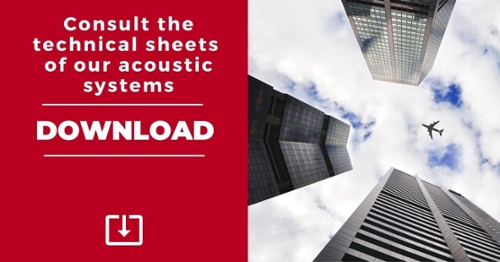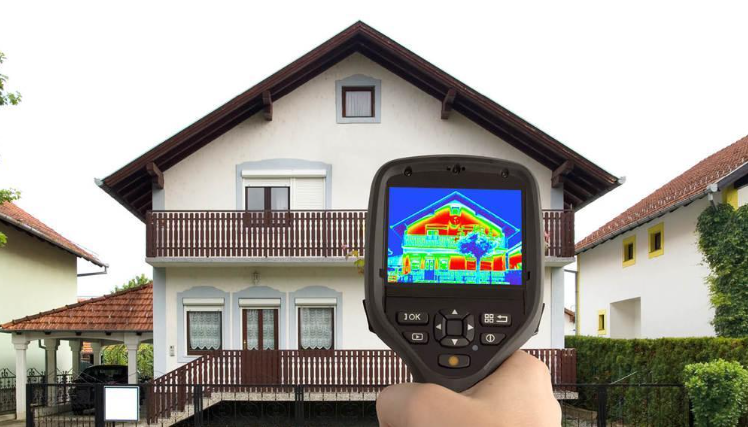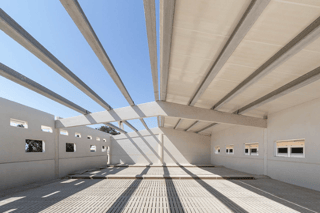Poor sound insulation is a problem for buildings, not only in purely constructive terms, but it also has an impact on the well-being and health of its occupants. Therefore, the interior noise of buildings has become a problem that requires effective constructive solutions to ensure compliance with current regulations.
Synthesia Technology is a manufacturer and distributor of polyurethane systems that have multiple applications in the construction sector and in other relevant sectors such as the industry. Below, we present a set of injected and sprayed polyurethane systems indicated to improve acoustic insulation.

Systems of injected and sprayed polyurethane foam for sound insulation
The Phono Spray I-905, S-904 and S-907 systems are thermoacoustic polyurethane systems that are applied by “in situ” projection or injection, obtaining low and medium density rigid open cell foams with good acoustic absorption properties.
The application of these systems improves the acoustic insulation of the housing in a global way, while reinforcing the hygrothermal behavior of the enclosure, thus complying with the regulations for protection against noise. In addition, these systems do not contain foaming agents that damage the ozone layer.
Phono Spray I-905
The Phono Spray I-905 injected polyurethane system is applied by casting with high pressure equipments, with heating, and a mixing ratio of 1:1 in volume. Its main application is the improvement of the thermoacoustic insulation to the aerial noise in enclosures of renovation buildings, as well in partitions between neighbors as in external facades.
The adhesion of the Phono Spray I-905 system is excellent with all materials used in construction (concrete, ceramics, laminated plaster, wood, etc.) as long as they are clean, dry and free of dust and grease.
|
Features |
|
|
Apparent bulk density |
12±2 kg/m3 |
|
Closed cells |
<20% |
|
Reaction to fire |
Euroclass F |
|
Water Permeability |
≤2 kg/m2 |
|
Water vapor resistance factor (μ) |
≥5 |
|
Acoustic absorption |
0,5 |
|
Resistivity to air flow r |
5-6 kPa s/m2 |
|
Free applied density |
18±2 g/l |
|
Thermal conductivity |
0,038 W/mK |
You can see its application in the following video:
Phono Spray S-904
The Phono Spray S-904 system is applied by "in situ" projection, obtaining open cell foam of low density (9-11 g/l) with good acoustic absorption properties. Its objective is the improvement of thermoacoustic insulation against airborne noise, and it can be applied both in partitions between neighbors and in façades.
|
Benefits |
|
|
Apparent bulk density |
10±1 kg/m3 |
|
Closed cells |
<20% |
|
Reaction to fire |
Euroclass F |
|
Water Permeability |
≤3.5 kg/m2 |
|
Water vapor resistance factor (μ) |
≥5 |
|
Acoustic absorption |
0,5 |
|
Resistivity to air flow r |
5-6 kPa s/m2 |
|
Free applied density |
10±1 g/l |
|
Thermal conductivity |
0,037 W/mK |
You can see its application In the following video:
Phono Spray S-907
The main application of the Phono Spray S-907 is the improvement of acoustic insulation to noise in floors, especially to impact noise in horizontal divisions, thanks to its porosity and elasticity. The system is applied by projection "in situ" obtaining medium density open cell foams (55-65 kg/m3). Phono Spray S-907, like the previous systems, is a constructive solution that improves the overall thermoacoustic insulation of the building.
|
Benefits |
|
|
Apparent bulk density |
55±10 kg/m3 |
|
Closed cells |
<20% |
|
Reaction to fire |
Euroclass F |
|
Water Permeability |
≤1 kg/m2 |
|
Water vapor resistance factor (μ) |
≥5 |
|
Acoustic absorption |
0,32 |
|
Resistivity to air flow r |
- |
|
Free applied density |
43±3 g/l |
|
Thermal conductivity |
0,037 W/mK |
It is recommended to apply the Phono Spray S-907 in the lower number possible of sprayed layers in order to achieve the desired thickness You can see its application in the following video:











